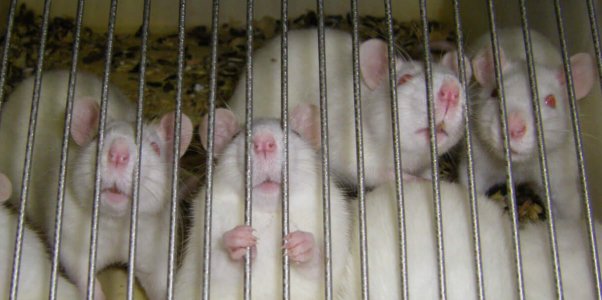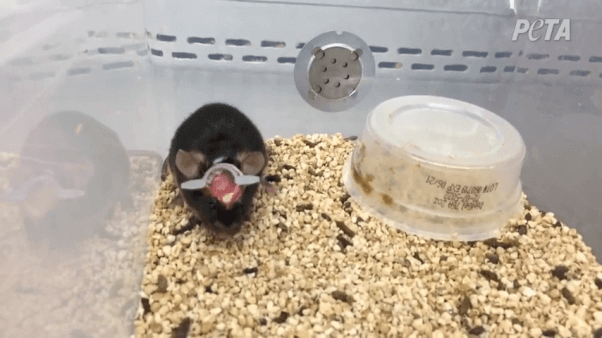The Shocking Truth About Animal Testing
Animal testing has left us hanging when it comes to finding a cure for life-threatening diseases in humans. In fact, experimenting on animals instead of focusing on actual human anatomy has even set science back. Here are some stats showing that animal experiments don’t work and that we’re not seeing benefits from them.
1. Every year, more than 110 million animals—including mice, frogs, dogs, rabbits, monkeys, fish, and birds—are killed in U.S. laboratories.
Experimenters immobilize them in restraint devices, force them to inhale toxic fumes, drill holes into their skulls, mutilate their brains, and burn their skin and eyes—and if the animals don’t die in the process, they’re killed afterward. Whether for biology lessons, medical training, curiosity-driven experiments, or chemical, drug, food, or cosmetics testing, they’re confined to cages, socially isolated, and psychologically traumatized.
2. Ninety-five percent of all new drugs shown to be safe and effective in animal tests fail in human trials.
This stat comes straight from the National Institutes of Health (NIH), 💥 the government agency that funnels billions of U.S. taxpayers’ dollars into these reckless experiments. 💥 NIH has noted that the drugs fail in humans because they either don’t work or are dangerous. Because animal trials are so unreliable, they make human trials riskier. A 95%failure rate? This would be unacceptable and cause for defunding in any other field. Animal testing shouldn’t get an exception.
3. Ninety-nine percent of the animals used in laboratories aren’t included in federal animal protection laws.
The federal Animal Welfare Act (AWA) has a misleading name. It doesn’t include rats, mice, birds, fish, reptiles, or amphibians (who make up 99% of the animals used in laboratories). And honestly, the 1% of animals it does include aren’t even protected from being burned, shocked, poisoned, isolated, starved, restrained, made addicted to drugs, or subjected to brain damage. No test—no matter how painful or trivial—is illegal. So what kind of “welfare” is that?
4. Between 2015 and 2019, more than 300,000 animals covered under the AWA were subjected to painful experiments without pain relief.
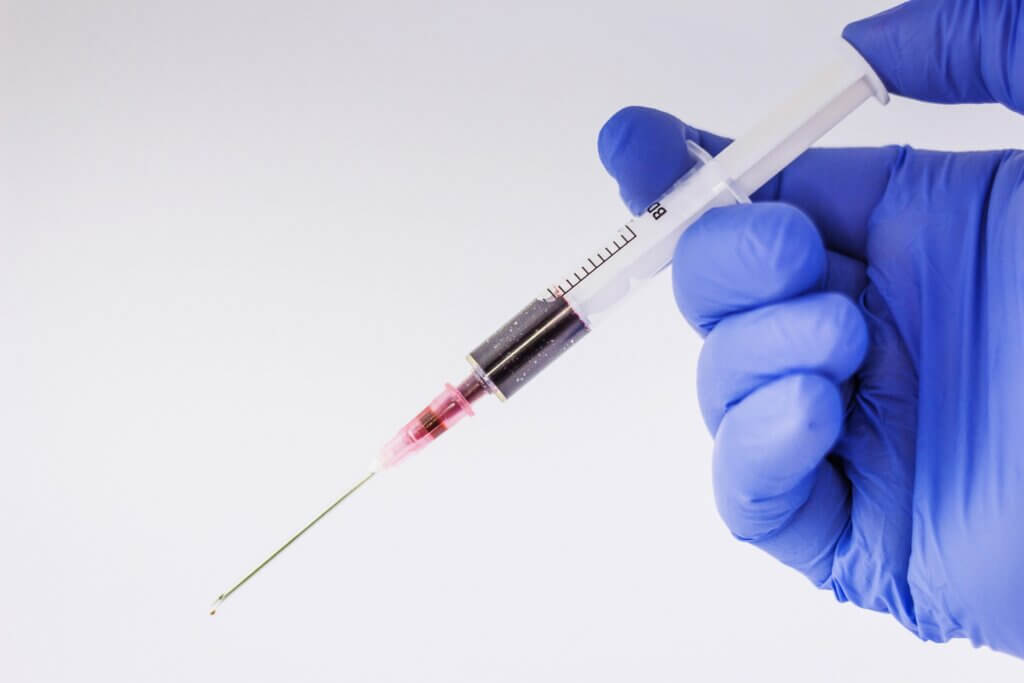
At NIH, small marmoset monkeys were injected with a chemical to elicit an immune response—causing weakness in their limbs and impairing their ability to move, including to the point of paralysis. In other experiments, guinea pigs were infected with filoviruses (causing severe hemorrhagic fever), resulting in seizures, tremors, paralysis, lethargy, vomiting, and diarrhea. As long as experimenters fill out the right paperwork, under the law they’re allowed to cause such suffering to animals.
5. A 2009 survey found that mice and rats used in invasive, painful surgeries were provided with postoperative pain relief only about 20% of the time.
The survey found that many mice and rats who were subjected to skull surgeries, burn experiments, spinal surgeries, and other horrors didn’t receive post-procedural pain relief. Imagine if someone were to drill open your skull to expose your brain but not give you so much as an Advil.
6. More than 93% of experimental cancer drugs failed in the first phase of human clinical trials after testing “successfully” on animals.
This survey was based on nearly 4,500 cancer drugs developed between 2003 and 2011. Artificially inducing a condition in a healthy individual of a different species who is confined and isolated in stressful, unnatural conditions and then applying the results to naturally occurring diseases in humans is not only unethical but also ridiculous. Even animal experimenters acknowledge that the extreme distress that the animals endure jeopardizes the results.
“The history of cancer research has been a history of curing cancer in the mouse. We have cured mice of cancer for decades and it simply didn’t work in humans,”
Richard D. Klausner, a former head of the National Cancer Institute.
7. About 100 HIV vaccines have been successful in animal experiments—and 100% of them failed to protect humans sufficiently.
In one case, an HIV vaccine that was shown to be effective in monkeys failed in human clinical trials because it didn’t prevent humans from developing AIDS. Some believe that it actually made them more susceptible to it. According to a report in The Independent, one conclusion was that “testing HIV vaccines on monkeys before they are used on humans, does not in fact work.”
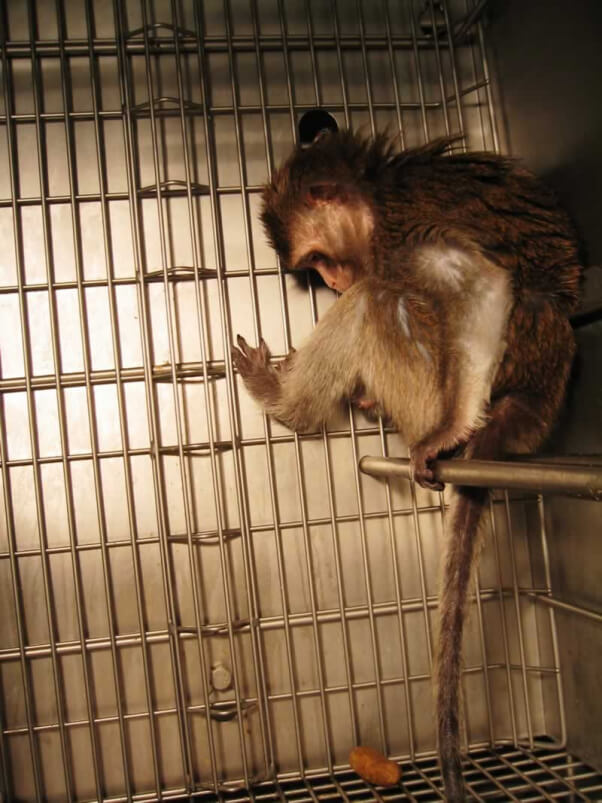
8. Every year in the U.S., NIH blows about 47% of research funding on animal experimentation.
Nearly 47% of NIH-funded research involves animals, and in 2020, the agency budgeted nearly $42 billion for research and development—that’s $19.6 billion spent on animal experiments. What a waste, right? Imagine how much progress we could make if all that money were going toward humane, non-animal tests that are faster and more effective.
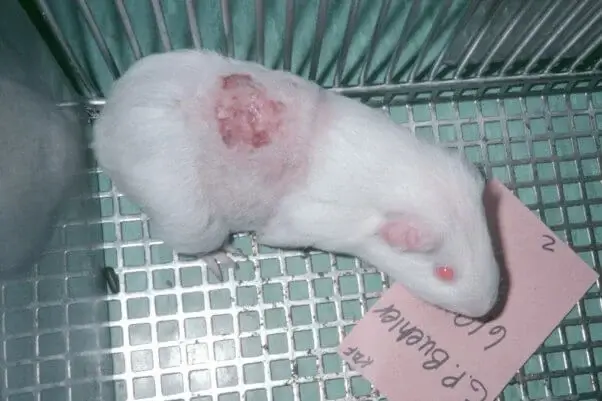
9. A major poll found that 52% of U.S. adults oppose the use of animals in experiments. ✨
A Pew Research Center poll found this, and other surveys suggest that the misguided folks who do support the use of animals only feel that way because they wrongly believe that it’s necessary. In an article published in The Journal of the American Medical Association, researchers found that medical treatments developed for animals rarely translated to humans and warned that “patients and physicians should remain cautious about extrapolating the finding of prominent animal research to the care of human disease … [and] poor replication of even high-quality animal studies should be expected.”
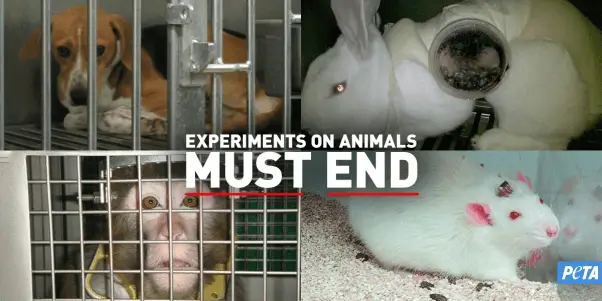
10. Since 2017, PETA has achieved nearly 150 victories for animals used in experiments.
Our victories include helping engineers develop a new ventilator for COVID-19 patients without animal testing, working with the Taiwan Food and Drug Administration to eliminate animal tests for health claims used to market foods, persuading Suave to go cruelty-free, and getting pharmaceutical giant Bristol Myers Squibb and others to ban near-drowning tests. PETA entities’ work to end animal experiments—backed by the support of more than 9 million members and supporters worldwide—is saving countless animals.
In NIH’s most recent five-year plan, the agency stated that “animal models often fail to provide good ways to mimic disease or predict how drugs will work in humans, resulting in much wasted time and money while patients wait for therapies.” Animal experiments are not a good indicator of drug responses in humans or any species other than the one being exploited. Penicillin is the backbone of human antibiotics, yet it kills guinea pigs! Aspirin kills cats and causes birth defects in rats, mice, guinea pigs, dogs, and monkeys. Morphine, a depressant in humans, stimulates goats, cats, and horses.
Statistics aside, animal experiments are speciesist—making them unacceptable 100% of the time. They don’t work—and even if they did, they’d still be unacceptable. Performing experiments without consent and depriving sentient beings of all that makes life worth living is never OK, even if someone’s pretending they’re doing so for science or medicine—it’s as simple as that. Learn how you can help animals used in experiments.
Text peta2 to 30933 for ways to help animals, tips on compassionate living, and more!

Terms for automated texts/calls from peta2: http://peta.vg/txt. Text STOP to end, HELP for more info. Msg/data rates may apply. U.S. only.



